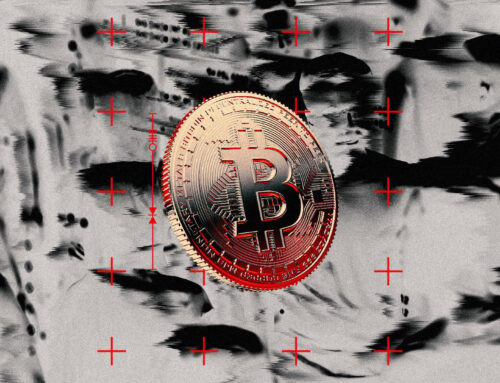Bitcoin sentiment plunges to extreme fear as Fear & Greed Index crashes to 10 — lowest sin
November 15, 2025
Bitcoin sentimenthas crashed to “Extreme Fear,” with the Fear & Greed Index plummeting to 10, the lowest level since the COVID-19 crash. On November 13, it ticked up to 15 and slightly rose to 16 on November 14, but investors remain deeply wary. This sharp drop in sentiment coincides with Bitcoin’s recent price volatility, which saw the cryptocurrency dip to around $95,383 before attempts to stabilize near $96,000. The sudden swings have unsettled traders, triggering panic selling among short-term investors.
Macro pressures are amplifying the fear. The Federal Reserve has ruled out a December rate cut, signaling higher borrowing costs ahead. This stance has rattled risk assets globally, causing synchronized outflows across both traditional finance and cryptocurrency markets. Rising Treasury yields are also drawing capital away from volatile assets like Bitcoin, while pressured tech stocks add to the market’s risk-off tone.
Historically, extreme Fear & Greed readings often align with local market bottoms. Long-term holders are already accumulating Bitcoin during the dip, seeing it as an opportunity to buy at lower prices. Social sentiment remains mixed, with bullish investors highlighting accumulation trends, while bearish views dominate short-term trading chatter. This split reflects high uncertainty but also hints at potential buying windows for patient investors.
Bitcoin’s current price is around $96,100, with daily fluctuations still significant. The Fear & Greed Index, which measures volatility, trading volume, market dominance, social media sentiment, and Google Trends, signals pronouncedrisk aversionand a cautious market mindset. Extreme fear readings like this have often preceded rebounds, but broader economic conditions will likely determine the timing and strength of any recovery.
Analysts caution that while sentiment indicators are useful, they cannot override macro realities. The Fed’s policies, global interest rates, and capital flows will continue to influence Bitcoin’s short-term direction. Still, long-term holders see the current environment as an accumulation opportunity, positioning themselves for potential upside once volatility eases.
For now, the crypto market is dominated by caution and uncertainty.Investors are closely watching price trends, macroeconomic signals, and market psychology indicators. The combination of high volatility, hawkish Fed signals, and global risk-off behavior has created a tense environment, making Bitcoin a focal point for both fear and opportunity.
Bitcoin investors should prepare for continued swings, but extreme fear readings may offer strategic entry points for long-term accumulation. The next few weeks could be decisive, depending on Fed communications and market reactions. Until then, the market sentiment remains firmly in “Extreme Fear,” reflecting both risk and potential reward for savvy investors.
Is bitcoin entering extreme fear territory?
Bitcoin sentiment has plunged into“Extreme Fear”, according to the Fear & Greed Index. The index recently hit10, marking the lowest point since the COVID-19 market crash. OnNovember 13, it slightly recovered to15, then edged up to16on November 14. Despite these minor rises, investor sentiment remains deeply negative.
This sharp drop in sentiment is closely linked to Bitcoin’s recent price volatility. The cryptocurrency fell to roughly $95,383, before attempting to stabilize near $96,000. The uncertainty is compounded by broader macroeconomic pressures. In particular, the Federal Reserve’s rejection of a December rate cut has shaken global markets, pushing investors to avoid riskier assets, including cryptocurrencies.
Extreme fear readings like this often appear when investors are nervous and selling off assets quickly. Yet, history shows that such periods can also attract long-term buyers. These investors see low sentiment as an opportunity to accumulate Bitcoin at discounted prices, while short-term traders may sell at a loss.
Even with the index slightly rising in the past two days, the overall mood in the crypto market is one of caution and uncertainty. Many traders are waiting for clearer signals from central banks before jumping back into the market.
Several factors are contributing to the current extreme fear in Bitcoin markets. First, the high volatility in Bitcoin’s price is a major concern. Sudden drops and spikes make investors anxious and trigger quick sell-offs. The recent dip below $96,000 has unsettled many retail and institutional investors.
Second, the Federal Reserve’s stance on interest rates is weighing heavily on markets. The Fed has ruled out a rate cut in December, signaling that borrowing costs may remain high. This has caused ripple effects across traditional finance and cryptocurrency markets, increasing risk aversion.
Additionally, rising Treasury yields are drawing capital away from riskier assets. Investors are seeking safer investments, leaving volatile assets like Bitcoin under pressure. Even tech stocks are struggling under similar conditions, showing that the fear is not limited to crypto.
Social sentiment also shows a mixed picture. On one side, some traders remain bullish, anticipating long-term gains. On the other, bearish sentiment dominates short-term discussions on social media. This split reflects the uncertainty that is fueling the current extreme fear.
Finally, market structure itself amplifies volatility. Large holders may sell during dips, while new investors panic, creating a feedback loop of fear and price swings. Understanding these drivers helps explain why the index has fallen so sharply.
Can this extreme fear signal a buying opportunity?
Extreme fear readings often coincide withmarket bottoms, making them potential buying opportunities for long-term investors. Historically, when the Fear & Greed Index drops to levels like10–15, some savvy investors step in to accumulate Bitcoin at lower prices.
Long-term holders are already taking advantage of the current environment. Despite daily price swings, these investors continue to buy and hold, expecting future recovery. Their actions suggest confidence that Bitcoin could rebound when macro conditions stabilize.
However, caution is still needed. While sentiment readings are useful, they are not guaranteed indicators of a bottom. The broader economic context, including interest rates and global risk trends, can override sentiment signals. Investors should consider both market psychology and macroeconomic factors before making decisions.
For short-term traders, extreme fear often triggers panic selling. But for patient, long-term investors, dips like these can provide opportunities to accumulate digital assets at a discount. Timing and strategy remain key to managing risk in such volatile conditions.
How do macroeconomic factors impact bitcoin now?
Bitcoin is not immune toglobal economic trends. The Federal Reserve’s current policy stance is one of the main drivers behind the recent drop in investor sentiment. With no rate cut expected in December, borrowing costs remain high, discouraging risk-taking across financial markets.
Rising Treasury yields add another layer of pressure. Investors are drawn to safer bonds offering better returns, which diverts capital away from high-volatility assets like Bitcoin. This capital flow explains some of the recent price declines and extreme fear readings.
Tech stocks, another traditionally risk-sensitive sector, are also under pressure. When tech markets struggle, Bitcoin and other cryptocurrencies often follow, as investors reduce exposure to all risky assets.
Bitcoin’s current price as of November 15, 2025, is approximately $95,879.26. The price has experienced some volatility during the day, with a low of about $94,222.20 and a high near $96,747.02. Compared to the previous close of $94,503.96, Bitcoin is showing a positive change of around 1.46% or $1,375.30. The recent trend over the past few days has seen a drop from highs near $101,640 on November 13, 2025, indicating a recent downward correction in Bitcoin’s price while it is now showing some recovery within the day.
Finally, market confidence often depends on clear signals from policymakers. Until the Fed signals a change in policy, Bitcoin may continue to face volatility and risk-off behavior. Traders and investors are closely monitoring macroeconomic developments for signs of stabilization.
(You can now subscribe to our Economic Times WhatsApp channel)
Search
RECENT PRESS RELEASES
Related Post




